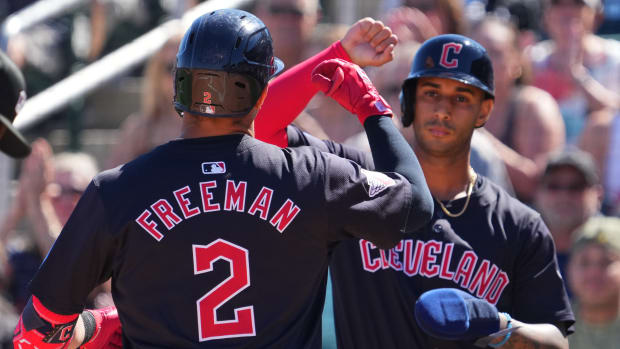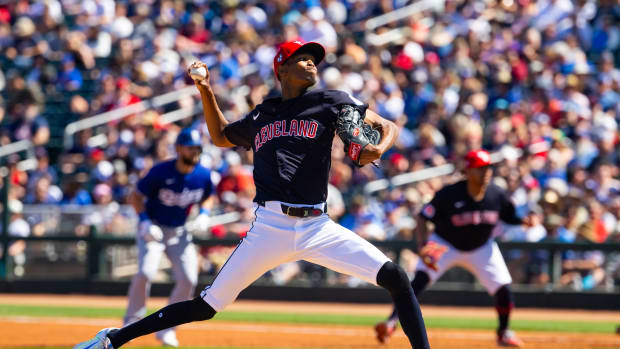A Canceled Season May Affect Lindor's Free Agency
There are a lot of if’s going around right now. For a lot of folks already tapping their toes, ready to get back to their routines, the return of baseball is on their mind. If it returns this season at all.
The Athletic’s Ken Rosenthal reported Thursday that in ongoing talks between MLB and the MLBPA partially involve service time and how the two sides will hash out a very important detail.
Logically, the two sides would use the number of games played, divided by the normal max number of service days (normally 187) and have a number that accounts for a full service year.
Again, if the season starts at all.
Rosenthal also tweeted that in the case there is no season at all, the Player’s Union is not asking that players receive a full year of service.
It goes without saying that if the season was canceled outright, there would be some sort of deal between the two sides. Yet without knowing what concessions each would make, the ramifications could be quite large.
Francisco Lindor is coming up on free agency, as you may have heard. Service time is key for that to happen. In the case that the year is lost, along with no arbitration for that year of service, the smiling shortstop would not only lose money this year but down the line as well.
Through the long winter, conversations around Lindor’s projected free agency always move to finding the right comparison.
The age at which a player hits free agency matters to his value, which is why Lindor conversations are directed toward Nolan Arenado’s deal, as opposed to Manny Machado. Machado signed a 10-year deal going into his age 27 year, while Arenado signed an 8-year extension going on 28, the same age as Lindor would be in 2022.
Should Lindor lose an entire service year, his market value at age 29 would likely take a massive hit.
Does that mean that he could fall into Cleveland’s price range?
Yes and no. This writer recently used a 10-year, $350 million contract to help financially plan a future with Lindor in Cleveland, while TJ Zuppe approached the concept with more nuance. Again, those figures came with the current trajectory in mind.
Comparatively, Gerrit Cole just got a 9-year, $324 million deal at 29, and Anthony Rendon got 7 years and $245 million headed into his age 30 year. Not only more talented than Rendon, Lindor also plays a premium position. Factor those things in, and the deal still does not look pretty to Paul Dolan.
Those contracts were supposed to be the good news for Clevelanders.
The bad news for those hoping Lindor stays in this scenario is that it just makes less sense for Cleveland to use 25-33 percent of their payroll on one player if they lose a premium season of the player’s talents. When mega-contracts are handed out, fans often point to the back-end of the deal, using current cases of aging like those of Albert Pujols and Miguel Cabrera.
Yet the reason that those contracts keep getting handed out is that teams are simply paying for the front end, knowing they will likely lose on the back end.
If Cleveland gets one fewer year on the front end of such a deal, there is that much less of a reason to hand it out in the first place. Take one look at the standard wRC+ aging curve, and you can see why. You can also see why Machado and Bryce Harper were worth so much more given their age.
See where that drop off starts? Unfortunately for Lindor, who already had his service time manipulated, he is currently hanging in the balance between the starkest points of a free agent’s worth.
Again, it is worth noting that in the case of a partial season or no season at all, there will likely be agreements made on how to proceed with service times. If there is no season, players at a certain point between service years may be granted a year while others do not. We just do not know.
Everybody in Cleveland wants to see Francisco Lindor back on the north coast for the long haul, but more importantly, everybody just wants to see baseball back as soon as it is safe. Nobody wants to sit around thinking about the implications of the season being canceled, and that is even before thinking about one more year of covering Lindor’s approaching free agency.
Being the person he is, Lindor definitely wants to get back to playing baseball, but given the implications of a year without it, he definitely wants to get back. Cleveland fans should want that, too.





